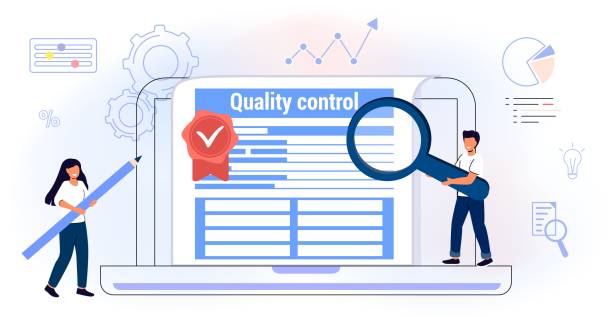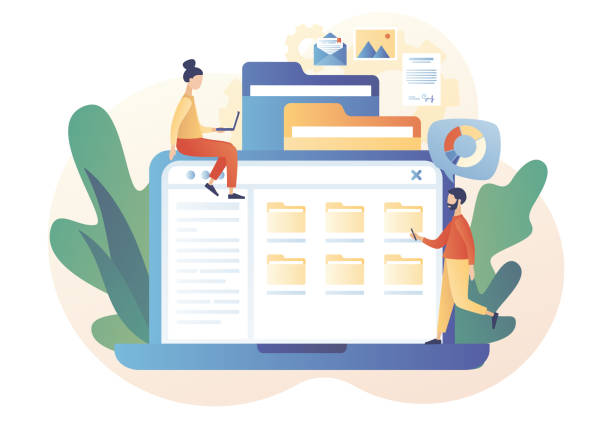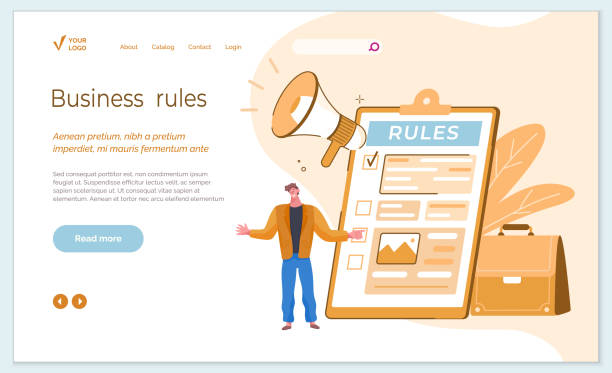Why Multilingual Website Design is a Necessity?

In the era of #globalization and unprecedented expansion of #digital_markets, access to international audiences is no longer a mere advantage; it has become an undeniable necessity.
Websites, as the storefronts of businesses in the online world, play a vital role in these communications.
But can a single-language website cater to the diverse needs of users from around the world? Absolutely not.
This is where the concept of multilingual website design comes into play.
This approach enables businesses to present their content in various languages, thereby transcending geographical boundaries and reaching a broader customer base.
This section is explanatory and educates you on why you should move in this direction.
A website’s ability to offer content in multiple languages not only increases the number of potential visitors but also helps to enhance brand credibility and build deeper connections with users.
Imagine a Japanese user visiting your website and being able to read all the information they need in their native language; this user experience will create unparalleled value.
Are you tired of your e-commerce website not generating as much revenue as its potential? Rasaweb, specializing in professional e-commerce website design, solves this problem forever!
✅ Increase sales rate and revenue
✅ High loading speed and unparalleled user experience
⚡ Get free e-commerce website design consultation
Competitive Advantages of Multilingual Websites

The benefits of multilingual website design extend beyond simply reaching more audiences; this approach can create a significant competitive advantage for your business.
One of the most important advantages is improved international SEO.
When your content is available in different languages, the chances of appearing in local search results for foreign users significantly increase.
For example, if someone in Germany is looking for a product or service similar to yours, your multilingual website with German content will likely appear higher than single-language competitors.
This leads to an increase in organic and targeted traffic.
Furthermore, improved user experience is another strength.
When users can view information in their native language, they feel more comfortable and trusting of your brand, which in turn increases conversion rates.
This section provides a deep analysis of the business achievements of this approach.
Market expansion and increased market share are also key benefits.
By targeting new language markets, you can access broader segments of the global population that were previously out of your reach.
This approach is particularly vital for companies aiming for globalization.
Challenges and Key Considerations in Multilingual Website Design
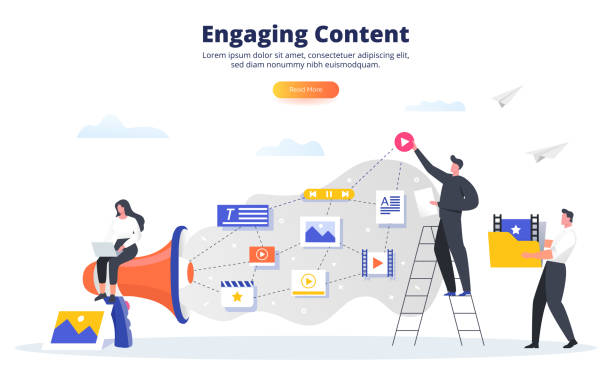
Although multilingual website design offers many advantages, this process comes with specific challenges and considerations that must be carefully addressed.
One of the biggest challenges is managing translated content and ensuring its quality.
Mere word-for-word translation is not enough; content must also be culturally and conceptually localized to resonate with local audiences.
This includes idioms, units of measurement, dates, and even tone of writing.
Another technical challenge is choosing the appropriate URL structure, which can include subdomains (en.example.com), subfolders (example.com/en), or country-code top-level domains (example.de).
Each of these structures has its own pros and cons, and an incorrect choice can negatively impact SEO.
Proper implementation of hreflang tags to help search engines understand different language versions of a page is also crucial.
This section of the article is technical and covers technical issues.
Additionally, managing SEO for multiple languages requires separate keyword research for each language and culture, as search terms and phrases may differ across languages.
The budget and resources required for translating, maintaining, and updating a multilingual site can also be substantial.
Finally, ensuring brand consistency and a uniform user experience across all languages requires careful planning and continuous coordination.
Below is a table comparing translation management methods:
| Translation Method | Advantages | Disadvantages | Best Use Case |
|---|---|---|---|
| Human Translation | High accuracy, tone and cultural preservation, SEO-friendly | High cost, time-consuming | Sensitive content, marketing, legal |
| Machine Translation (MT) | High speed, low cost | Low accuracy, lack of context understanding, low quality | Internal content, informal communications |
| Machine Translation with Post-Editing (MTPE) | Combination of speed and quality, moderate cost | Requires experienced translator for MT post-editing | Website content, technical documentation |
| Translated Content Management (TMS) | Process automation, integrity preservation, error reduction | High initial cost, setup complexity | Large and ongoing projects |
Technical Aspects of Building a Multilingual Site

When planning for multilingual website design, choosing the right URL structure is a critical decision that directly impacts SEO and user experience.
There are three main methods for organizing URLs: subdomains (e.g., en.example.com), subfolders (e.g., www.example.com/en/), and country-code top-level domains (e.g., www.example.de).
Each of these structures has its own advantages and disadvantages.
Subdomains offer good hosting flexibility, but they might be perceived by search engines as independent sites, affecting the transfer of “domain authority”.
Subfolders are generally more SEO-friendly because all content resides under a single main domain, indicating to search engines that they all belong to a related entity.
Country-code top-level domains are ideal for targeting specific countries but involve higher management and costs.
This section is educational and technical.
Regardless of the URL structure, proper implementation of `hreflang` tags is vital for search engines like Google.
These tags inform the search engine which version of the page is appropriate for which language and geographical region, preventing duplicate content issues.
Google recommends using these tags to ensure the correct page version is displayed to users in search results.
Additionally, the user’s language detection system (usually based on browser settings or IP) plays a significant role in guiding them to the appropriate language version in a multilingual website.
These technical aspects form the cornerstone of a successful multilingual website, and neglecting them can harm the site’s performance in search engines.
Do you dream of a thriving online store but don’t know where to start?
Rasaweb is your comprehensive e-commerce website design solution.
✅ Attractive and user-friendly design
✅ Increased sales and revenue⚡ Get a free consultation
Content and Translation Management in International Websites

The success of a multilingual website design largely depends on the quality and efficiency of its content and translation management processes.
Translating words alone is never enough; localization goes beyond that, involving adapting content to the cultural, social, and even legal context of the target audience.
For example, colloquialisms, cultural references, units of measurement, date and time formats, and even colors and images may need adjustment to align with the cultural sensitivities of each region.
This section is a comprehensive guide for translation processes.
Choosing the translation method is also very important.
Human translation offers the highest quality and accuracy, especially for marketing and sensitive content that requires a deep cultural understanding and appropriate tone.
Machine translation, although fast and cheap, usually lacks cultural nuances and necessary accuracy unless combined with human post-editing.
Translation Management Systems (TMS) can help automate and organize these processes, ensuring content is seamlessly managed across all languages.
These systems offer features such as Translation Memory and Terminology Database, which help maintain consistency and reduce translation costs in the long run.
Having a clear workflow for content translation and updates, including review and approval stages, is essential for maintaining quality and preventing errors in a multilingual website.
Search Engine Optimization (SEO) for Multilingual Projects
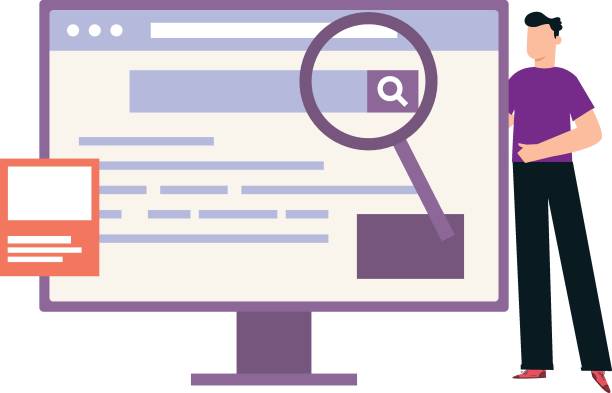
SEO for multilingual website design has its own complexities that go beyond traditional SEO.
One of the first steps is to conduct keyword research for each language.
Words popular in one language may have different synonyms or even concepts in another.
Therefore, using local keyword research tools and having a deep understanding of user search behavior in each region is crucial.
This section is technical and educational.
For example, a popular keyword in English might not have a direct translation in Spanish and may require different search phrases.
Avoiding duplicate content is one of the biggest concerns in multilingual SEO.
As mentioned earlier, the correct use of `hreflang` tags and choosing an appropriate URL structure are very important for indicating to search engines which version is for which region or language.
This helps search engines treat different pages as distinct and targeted content, not duplicate copies.
Local Link Building is also an effective strategy.
Acquiring backlinks from reputable and relevant websites in each language market increases your site’s credibility in that region and helps improve SEO rankings.
Using Google Search Console to set international targeting and monitor site performance in each language is a powerful tool for continuous optimization.
Optimizing images, meta tags, and descriptions should also be done for each language separately, considering local keywords.
This comprehensive approach to SEO ensures your multilingual site achieves its maximum potential in every market.
User Experience (UX) and Interface Design in Multilingual-Capable Sites
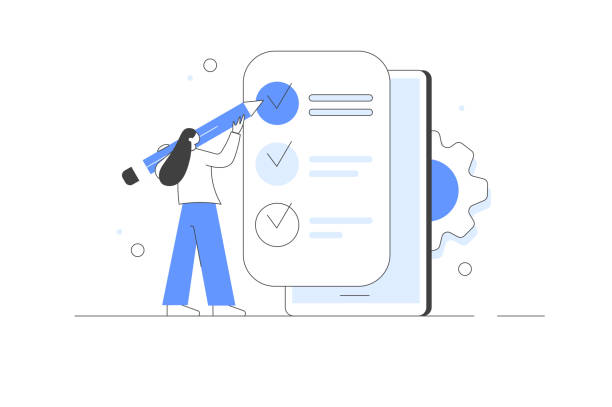
User Experience (UX) plays a pivotal role in multilingual website design and goes beyond mere text translation.
A successful multilingual website should allow users to easily and quickly select their preferred language.
This is typically done using a visual and accessible Language Switcher in the header or footer of the site.
The design of this switcher should not be confusing; using native language names (e.g., “English” instead of the localized word for “English”) or country flags can aid easier identification.
However, using flags can sometimes be misleading, as one language might be spoken in multiple countries (e.g., Spanish in Spain and Latin America).
This section raises a question about whether flags are the right choice.
Another important consideration is designing for different text directions.
Many languages, like Persian and Arabic, are written Right-to-Left (RTL), while most European languages are Left-to-Right (LTR).
This difference in orientation affects not only how text is displayed but also the arrangement of visual elements, forms, and even icons.
The website should automatically, or with user selection, adjust the layout to suit the language direction to provide an optimal visual experience.
Maintaining brand consistency and visual identity across all language versions is also essential.
This includes using appropriate fonts, colors, and images that have positive connotations in all cultures and prevent any cultural misunderstandings.
Optimizing page loading speed is also crucial across all language versions, as users in different regions may have varying internet speeds.
Finally, conducting user tests with native speakers is highly recommended to ensure the accuracy and effectiveness of the website in each language.
Below is a table of key multilingual UX design tips:
| UX Element | Multilingual Considerations | Key Point |
|---|---|---|
| Language Switcher | Visible, use native language names, avoid flags as the sole icon | Easy access and intuitive language selection |
| Text Direction (RTL/LTR) | Automatic layout and element adjustment based on language direction | Flexible design to support both directions |
| Images and Icons | Choose universal and culturally neutral or localized images and icons | Avoid cultural misunderstandings and unintended messages |
| Local Formats | Date, time, currency, phone number, address | Display information in the local user’s familiar format |
Popular Tools and Platforms for Multilingual Website Design

Today, thanks to technological advancements, multilingual website design has become much easier than in the past.
Many popular Content Management Systems (CMS) have native capabilities for multilingual support or offer this functionality through plugins and modules.
For example, WordPress, one of the most widely used CMSs in the world, can easily be transformed into a multilingual site using plugins like WPML or Polylang.
These plugins enable the translation of content, categories, tags, menus, and even the website theme, simplifying the content management process for multiple languages.
Good news for developers and business owners!
Other CMSs like Drupal and Joomla also support powerful multilingual capabilities natively or through extensions.
For larger and more complex projects, more specialized platforms and Translation Management Systems (TMS) such as Smartling or Transifex exist, which manage translation processes more comprehensively and automatically.
These tools are especially suitable for organizations with high volumes of content and a need for continuous translation into multiple languages.
Using these tools and platforms not only reduces time and cost but also helps maintain content quality and consistency across all languages, playing a significant role in the design and implementation of multilingual websites.
Familiarity with these tools is educational and vital for anyone looking to expand their online activities into international markets.
Is your e-commerce site ready to attract maximum customers and increase sales? Rasaweb transforms your online business with modern and efficient e-commerce website design.
✅ Increased speed and improved SEO
✅ Excellent user experience on mobile and desktop⚡ Get a free e-commerce website design consultation from Rasaweb!
Ongoing Maintenance and Updates for Your Multilingual Site
![]()
Building a multilingual site is only half the battle; its continuous maintenance and updates are crucial to ensuring its effectiveness, security, and relevance to audiences.
This process involves several key aspects that must be performed regularly.
The first and most important aspect is content updates.
Your content must remain fresh and relevant across all languages.
This means that every time you add new content in the primary language, you must have a plan for its quick translation and localization into other languages.
Failure to do so can lead to information inconsistencies and user confusion.
This section is a practical guide for maintaining your site.
Technical updates are also an inseparable part of maintenance.
This includes updating the CMS, plugins, theme, and any other software your website runs on.
Regular updates not only ensure site security but also improve its performance and prevent compatibility issues.
Monitoring site performance using analytical tools like Google Analytics is also very important.
By analyzing data related to traffic, Bounce Rate, and user session duration in each language version, you can identify weaknesses and optimize your strategies to improve user experience and SEO in each market.
Addressing user feedback and resolving technical or content issues promptly helps maintain audience trust.
Ultimately, investing in continuous maintenance ensures the stability and long-term success of your multilingual project and prevents its obsolescence.
The Future of Multilingual Website Design and Innovations

The digital world is evolving rapidly, and multilingual website design is no exception.
Technological innovations, especially in the field of Artificial Intelligence (AI) and Machine Learning, are changing our approach to translation and localization.
AI-powered machine translation is becoming increasingly accurate and natural, and it can accelerate the process of producing multilingual content.
Although it is not yet a complete substitute for human translation, its role in generating initial drafts and reducing translation time and cost is growing.
This section of the article is an entertaining and analytical look at the future.
Another future trend is content personalization based on user language and location.
By using user data and AI, websites can deliver content that is not only in the user’s language but also matches their specific interests and needs in that geographical region.
This level of personalization significantly improves the user experience and creates a deeper connection with the audience.
Also, multilingual content management tools are expected to become more integrated and intelligent, automating translation, localization, and publishing processes.
Given the ongoing trend of globalization and increasing internet access worldwide, the demand for multilingual website design and innovative solutions in this field will continue to grow.
Businesses that embrace these trends and continuously update their multilingual websites will be best positioned for success in the global market.
Frequently Asked Questions
| Question | Answer |
|---|---|
| What is a multilingual website? | It is a website whose content is available to users in multiple different languages. |
| Why should we design a multilingual website? | To expand reach to international audiences, increase site traffic, improve SEO in target markets, and provide a better user experience for non-Persian speaking users. |
| What are the main methods for implementing a multilingual site? | Using subdomains (e.g., en.mysite.com), using subdirectories (e.g., mysite.com/en/), and using separate domains for each language (e.g., mysite.com and mysite.de). |
| Which implementation method is better for SEO? | Generally, using subdirectories (language folders) is often recommended due to the transfer of main domain authority to other languages. |
| What is the Hreflang tag and what is its use? | It is an HTML tag or HTTP Header that informs search engines which version of a page is suitable for which language or geographical region. This tag prevents Duplicate Content issues and improves SEO. |
| How is a Language Switcher designed? | Usually by using a dropdown menu, button, or flag in the site’s header or footer, which allows the user to select their desired language. |
| Is automatic (machine) translation suitable for a multilingual site? | No, machine translation usually has low quality and many errors that can harm the site’s credibility. Human translation or a combination of human translation and machine post-editing is recommended. |
| What are the most important SEO tips in multilingual website design? | Correct use of Hreflang tags, having a suitable URL structure for each language, translating titles and meta descriptions, translating main content, and internal linking between related language versions. |
| Should all website content be translated? | It depends on the strategy. Usually, the main and important content of the site should be translated. Less important sections or blogs may not require full translation. |
| What are the main challenges in multilingual website design? | Managing content in different languages, translation costs, technical issues related to URLs and language tags, template compatibility with Right-to-Left (RTL) languages like Persian and Arabic, and managing multilingual SEO. |
And other services of Rasa Web Advertising Agency in the field of advertising
Smart UI/UX: A creative platform to improve campaign management with precise audience targeting.
Smart UI/UX: Designed for businesses looking to increase click-through rates through SEO-driven content strategy.
Smart UI/UX: A creative platform to improve SEO ranking by customizing user experience.
Smart Link Building: A combination of creativity and technology for campaign management through precise audience targeting.
Smart Customer Journey Map: Professional optimization for digital branding using custom programming.
And over hundreds of other services in the field of internet advertising, advertising consultation, and organizational solutions
Internet Advertising | Advertising Strategy | Advertorials
Sources
The Importance of Multilingual Website Design
Advantages of Multilingual Website Design
Why should we have a multilingual website?
Principles of Multilingual Website Design
📍 To reach the pinnacle of success in the digital space, Rasaweb Afarin Digital Marketing Agency accompanies your business with specialized services such as SEO-optimized website design.
📍 Tehran, Mirdamad Street, Next to Bank Markazi, Kazeroun Jonoubi Alley, Ramin Alley No. 6
☎️ 02126406207

